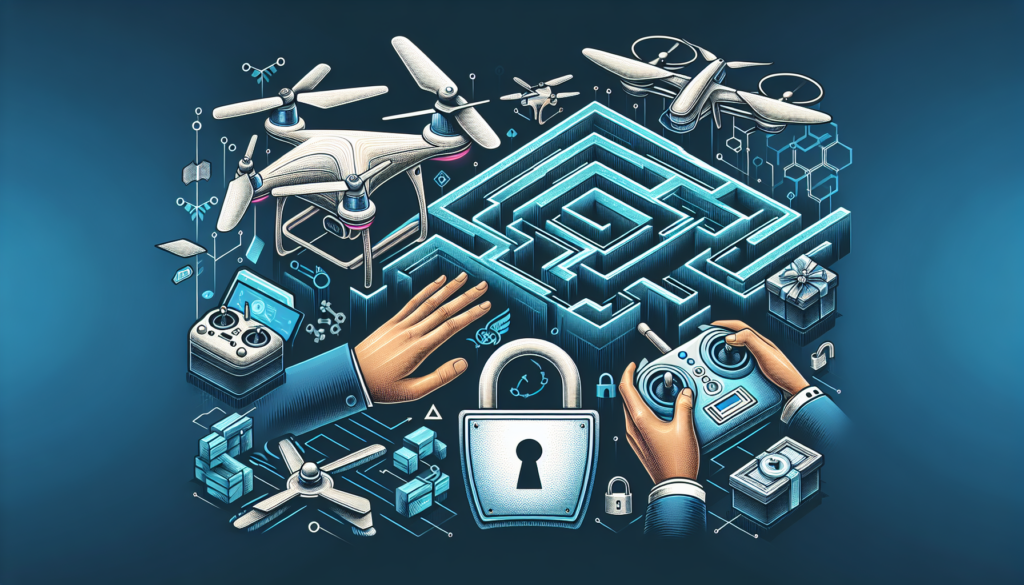In the horizon of modern aeronautics, drones, or unmanned aerial vehicles (UAVs), emerge with exponential versatility and potential, permeating sectors as diverse as military, logistics, and personal entertainment. Their growing prevalence demands a meticulous analysis of the existing regulatory mechanisms and the security implications inherent in their operation and technical development. This article aims to dissect those regulatory and security challenges in the context of drones, providing a comprehensive understanding of how regulations are evolving across different jurisdictions and how safety has become a central pillar of the debate surrounding drone use.
Legislation and Current Regulations
Jurisdictional Approaches
Drone regulation varies significantly between countries and regions. In the United States, the Federal Aviation Administration (FAA) sets policies for the commercial and recreational operation of drones, while in Europe, the European Union Aviation Safety Agency (EASA) has standardized rules across its member states. The cross-border nature of drone operations poses unique challenges in terms of sovereignty and airspace control.
Drone Classification and Requirements
UAV classification is based on factors such as weight, range, and use. Different classes require distinct regulations, including flight permits, registrations, and often, liability insurance. Drone registration is a key axis in tracking and accountability strategies.
Operations and Flight Restrictions
Laws often stipulate limits on flight altitudes, restricted areas near airports and sensitive locations, and clear rules about privacy and data protection. In many cases, visual line of sight (VLOS) or advanced systems like beyond visual line of sight (BVLOS) flight are required, which involve advanced detection and avoidance technologies.
Technological Advances and Drone Safety
Advancements in Detection and Avoidance
Innovative technologies for detection and avoidance of obstacles are vital in promoting the safe use of drones. Anti-collision systems based on radar, LIDAR, and cameras are constantly evolving, increasing autonomy and reducing the risk of incidents.
Communications and Drone Traffic Control
The development of an Unmanned Aircraft System Traffic Management (UTM) system is crucial for integrating drones safely into the airspace. This system manages flight trajectories and ensures communication between drones, operators, and air traffic controllers, which is crucial for handling simultaneous flights in densely populated areas.
Cybersecurity and Data Protection
Protection against cyber threats is an increasingly central aspect of drone safety. UAVs must be safeguarded against hacking and other cyber vulnerabilities that could result in payload loss, flight hijacking, or privacy breaches.
Resistance to Interference and Adverse Conditions
UAVs are being designed to withstand electromagnetic interference and adverse atmospheric conditions. This includes the development of resistant materials, more efficient power systems, and robust flight algorithms.
Case Studies and Practical Application
Drone Delivery Operations
Companies like Amazon and UPS are developing delivery operations using drones. This requires navigating significant regulatory hurdles, ensuring package integrity, and maximizing safety in areas with varied population density.
Drones in Emergency Response
Drones have proved to be valuable resources in emergency situations, from distributing medications to assessing natural disasters. In these scenarios, the speed and flexibility of drones must be balanced with coordination with response agencies and compliance with local regulations.
Agriculture and Conservation
In precision agriculture and environmental conservation, drones play an essential role in data collection and monitoring. Here, the regulations must address the use of drones beyond visual line of sight and the impact on wildlife.
Anticipated Innovations and Future Directions
Advanced Autonomy and Mass Drone Flights
A leap towards full autonomy in drone operation is anticipated, which could potentially lead to skies filled with UAVs performing diverse tasks. The regulations and safety infrastructures will need to evolve rapidly to keep up with these innovations.
Integration into Urban Space
The concept of smart cities includes the integration of drones for services such as infrastructure inspections and advertising. Urban regulatory frameworks will have to consider these new uses, as well as their implications for privacy and urban safety.
Drones and Big Data
The analysis of the vast datasets collected by drones will drive innovations in everything from urban planning to meteorology. This will pose challenges in terms of management, storage, and protection of sensitive data.
International Regulation and Standards
Future regulation will move towards more international frameworks, seeking to standardize operations and ensure safety in an increasingly globalized airspace.
Regulation and safety of drones are at a critical and dynamic point of evolution. It is essential that lawmakers, engineers, and companies continue to work closely together to foster innovations that promote the safe and regulated use of UAVs, keeping pace with technological advancements and emerging social needs. This balance will ensure that the vast potential of drones can be harnessed to the fullest without compromising public safety or the integrity of airspace.

